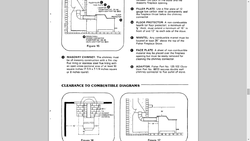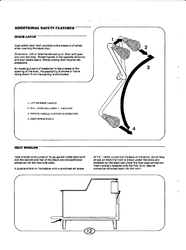hi all new here. I have some ? hope someone can help well here we go. I have a grandpapa fireplace stove double door and has a 8 inches flue I read I can reduce to 6 because the 8 was for open door fire. I all so was wondering how close you can have the bottom of the stove to the hearth cause I need to go down 2inches to make it work with the hearth I have. I look up prices for a new on and called. a man he ask me the r value of it. I read that it needed to sit on a 3/8 asbestos millboard. I like to cut the legs on it to make lower can I. I am going to look to see if I can find a 3/8 hearth online but 400 dollars wow. does anyone no the r value? seen jimmy had a heat shield on bottom of his that be nice if I had but don't stove in house no welder. hearth pad 2 inches help.! I all so have a reducer; and it slide over 8 inch pipe should I drill holes to screw.it fit on pipe tight.. oh the man told me that the hearth pad he has was 2,86 r value and most others are just 1.4.
well here we go. I have a grandpapa fireplace stove double door and has a 8 inches flue I read I can reduce to 6 because the 8 was for open door fire. I all so was wondering how close you can have the bottom of the stove to the hearth cause I need to go down 2inches to make it work with the hearth I have. I look up prices for a new on and called. a man he ask me the r value of it. I read that it needed to sit on a 3/8 asbestos millboard. I like to cut the legs on it to make lower can I. I am going to look to see if I can find a 3/8 hearth online but 400 dollars wow. does anyone no the r value? seen jimmy had a heat shield on bottom of his that be nice if I had but don't stove in house no welder. hearth pad 2 inches help.! I all so have a reducer; and it slide over 8 inch pipe should I drill holes to screw.it fit on pipe tight.. oh the man told me that the hearth pad he has was 2,86 r value and most others are just 1.4.
 well here we go. I have a grandpapa fireplace stove double door and has a 8 inches flue I read I can reduce to 6 because the 8 was for open door fire. I all so was wondering how close you can have the bottom of the stove to the hearth cause I need to go down 2inches to make it work with the hearth I have. I look up prices for a new on and called. a man he ask me the r value of it. I read that it needed to sit on a 3/8 asbestos millboard. I like to cut the legs on it to make lower can I. I am going to look to see if I can find a 3/8 hearth online but 400 dollars wow. does anyone no the r value? seen jimmy had a heat shield on bottom of his that be nice if I had but don't stove in house no welder. hearth pad 2 inches help.! I all so have a reducer; and it slide over 8 inch pipe should I drill holes to screw.it fit on pipe tight.. oh the man told me that the hearth pad he has was 2,86 r value and most others are just 1.4.
well here we go. I have a grandpapa fireplace stove double door and has a 8 inches flue I read I can reduce to 6 because the 8 was for open door fire. I all so was wondering how close you can have the bottom of the stove to the hearth cause I need to go down 2inches to make it work with the hearth I have. I look up prices for a new on and called. a man he ask me the r value of it. I read that it needed to sit on a 3/8 asbestos millboard. I like to cut the legs on it to make lower can I. I am going to look to see if I can find a 3/8 hearth online but 400 dollars wow. does anyone no the r value? seen jimmy had a heat shield on bottom of his that be nice if I had but don't stove in house no welder. hearth pad 2 inches help.! I all so have a reducer; and it slide over 8 inch pipe should I drill holes to screw.it fit on pipe tight.. oh the man told me that the hearth pad he has was 2,86 r value and most others are just 1.4.



